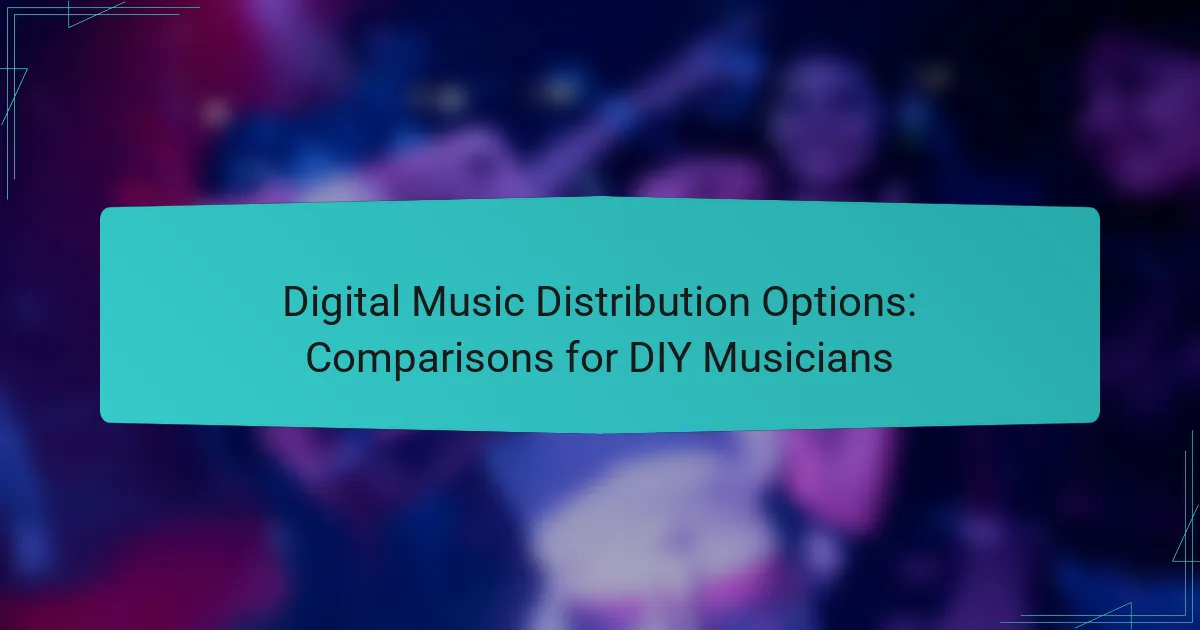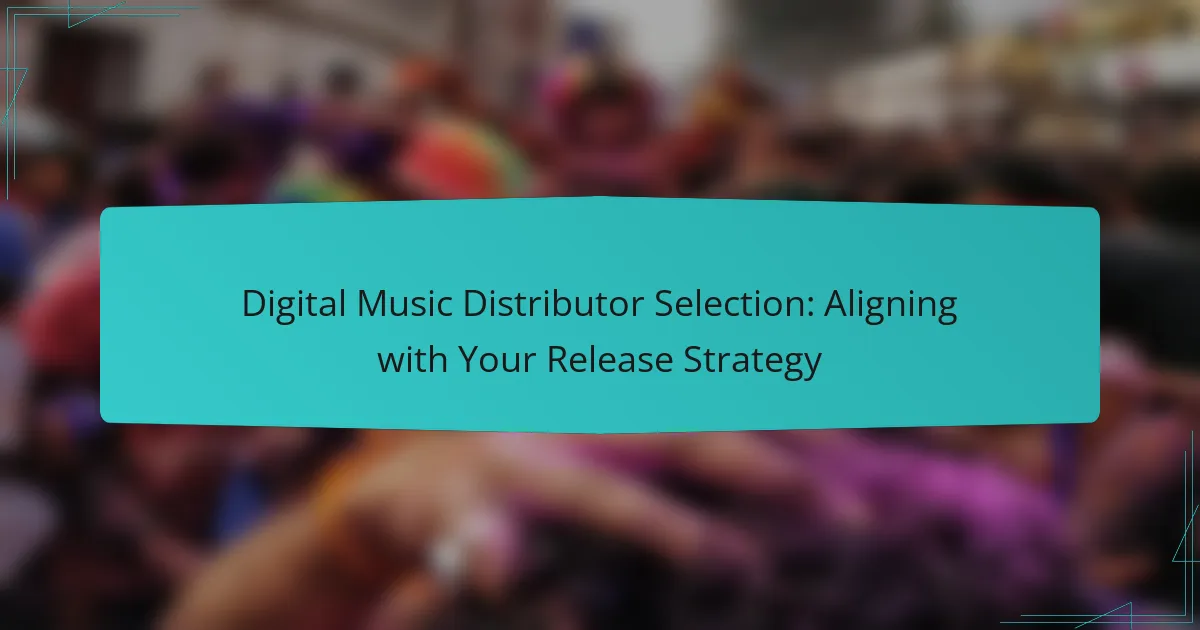When it comes to digital distribution, understanding the royalty structures of various platforms is essential for maximizing earnings. Distributors like Bandcamp, Amazon Kindle Direct Publishing, and Apple Music offer competitive payouts, but their structures can vary widely. Factors such as sales volume and geographic market also play a significant role in determining how much artists ultimately earn from their work.
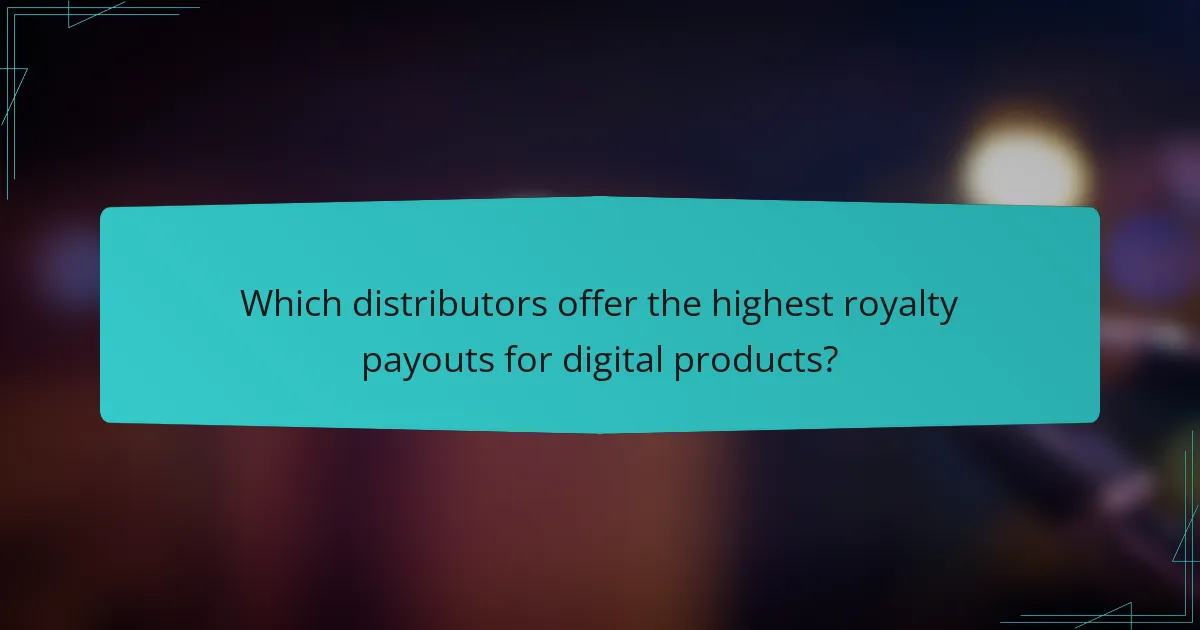
Which distributors offer the highest royalty payouts for digital products?
Several distributors provide competitive royalty payouts for digital products, with Bandcamp, Amazon Kindle Direct Publishing, and Apple Music leading the pack. Each platform has its own payout structure, which can significantly impact an artist’s earnings.
Bandcamp offers up to 85% payout
Bandcamp is known for its artist-friendly model, allowing creators to earn up to 85% of sales revenue. This high payout percentage is possible because Bandcamp takes a small percentage of sales, which can be adjusted by the artist based on their pricing strategy.
Artists can set their own prices and even offer pay-what-you-want options, which can increase sales and overall earnings. Additionally, Bandcamp provides tools for artists to promote their music directly to fans, enhancing their revenue potential.
Amazon Kindle Direct Publishing offers 70% royalty
Amazon Kindle Direct Publishing (KDP) offers authors a royalty rate of 70% on eBook sales priced between $2.99 and $9.99. This competitive rate makes KDP a popular choice for self-published authors looking to maximize their earnings.
However, to qualify for the 70% royalty, authors must adhere to certain conditions, such as making their eBooks available in all territories where Amazon operates. Authors should also consider the costs associated with printing and distribution if they choose to publish physical copies.
Apple Music pays 52% to artists
Apple Music typically pays artists around 52% of the revenue generated from their streams. While this payout is lower than some other platforms, it reflects the overall streaming model where revenue is shared among various stakeholders, including labels and producers.
Artists should keep in mind that the actual amount they receive can vary based on their agreements with record labels and the overall performance of their music on the platform. Understanding these dynamics is crucial for artists aiming to optimize their earnings from streaming services.

How do royalty structures differ among distributors?
Royalty structures among distributors can vary significantly, affecting how much artists and creators earn from their work. Understanding these differences is crucial for making informed decisions about where to distribute content.
Flat-rate vs. percentage-based royalties
Flat-rate royalties provide a fixed payment for the use of content, regardless of sales volume. This model offers predictability but may not maximize earnings if the content performs exceptionally well.
In contrast, percentage-based royalties involve earning a set percentage of sales revenue, which can lead to higher payouts for popular works. For example, a distributor might offer a 15% royalty on sales, meaning if a song sells for $1, the artist earns $0.15.
Tiered royalty structures explained
Tiered royalty structures reward creators with increasing percentages as sales thresholds are met. For instance, an artist might earn 10% on the first 1,000 units sold, then 15% on units sold beyond that. This incentivizes higher sales and can lead to greater overall earnings.
When considering tiered structures, it’s important to analyze the thresholds and potential earnings. Creators should evaluate whether the tiers align with their sales expectations and if the distributor’s model supports their revenue goals effectively.

What factors influence distributor payouts?
Distributor payouts are influenced by various factors, including sales volume and geographic market. Understanding these elements can help you choose the right distributor for maximizing your earnings.
Sales volume impacts royalty rates
Sales volume is a critical factor in determining royalty rates. Generally, higher sales volumes can lead to better payout percentages, as distributors often offer tiered royalty structures that reward increased sales. For instance, a distributor might pay 10% on the first $10,000 in sales and increase the rate to 15% for sales exceeding that threshold.
When negotiating contracts, consider how your projected sales volume aligns with the distributor’s payout structure. If you anticipate significant growth, look for distributors that offer favorable terms for higher sales brackets to maximize your returns.
Geographic market influences payouts
The geographic market can significantly affect distributor payouts due to varying demand, competition, and local regulations. For example, distributors operating in larger markets like the United States or Germany may offer higher payouts compared to those in smaller regions due to increased sales potential.
Additionally, consider local market conditions such as currency fluctuations and consumer behavior. For instance, a distributor in a country with a strong currency may provide better payouts in local currency terms, making it essential to evaluate the overall market landscape before making a decision.
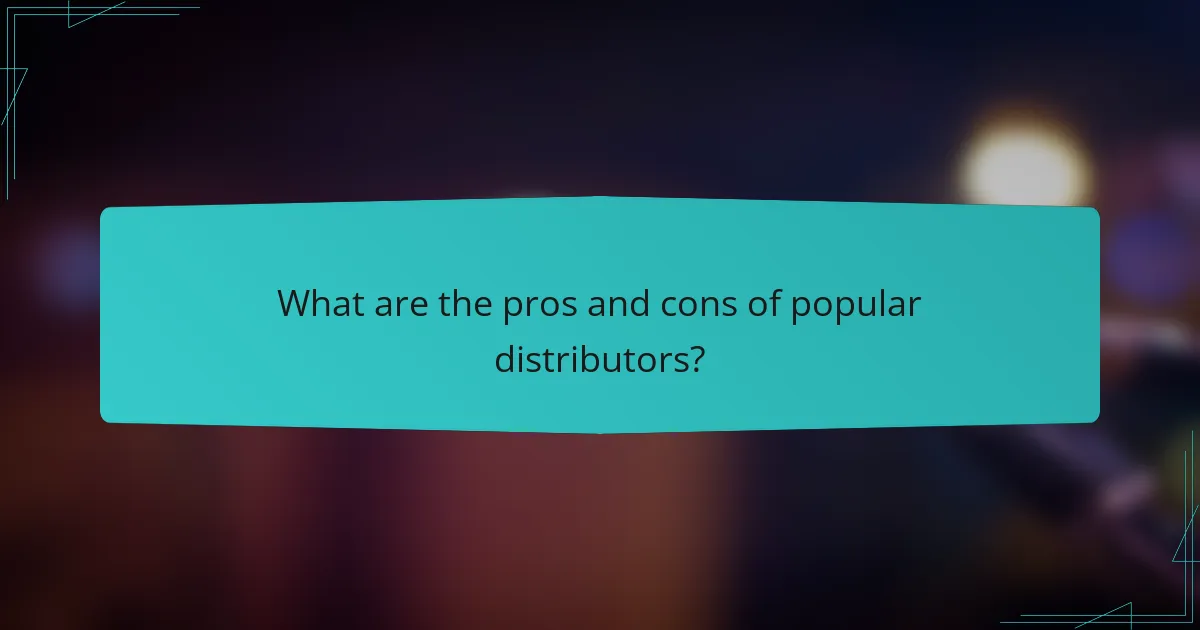
What are the pros and cons of popular distributors?
Different music distributors offer unique advantages and disadvantages that can significantly impact artist earnings. Understanding these factors can help artists choose the right platform for maximizing their royalty payouts.
Bandcamp allows direct artist support
Bandcamp is known for its artist-friendly model, allowing musicians to set their own prices and receive a larger share of sales. Typically, artists keep around 85% of the revenue after payment processing fees, which can be more favorable compared to other platforms.
This direct support model encourages fans to purchase music and merchandise, fostering a closer relationship between artists and their audience. Additionally, Bandcamp offers features like fan subscriptions and digital downloads, enhancing revenue opportunities.
Amazon offers vast reach but lower payouts
Amazon Music provides access to a massive audience, which can be beneficial for exposure. However, the payout structure is generally lower, with artists typically receiving around 15-30% of the revenue from streams and downloads, depending on the specific service used.
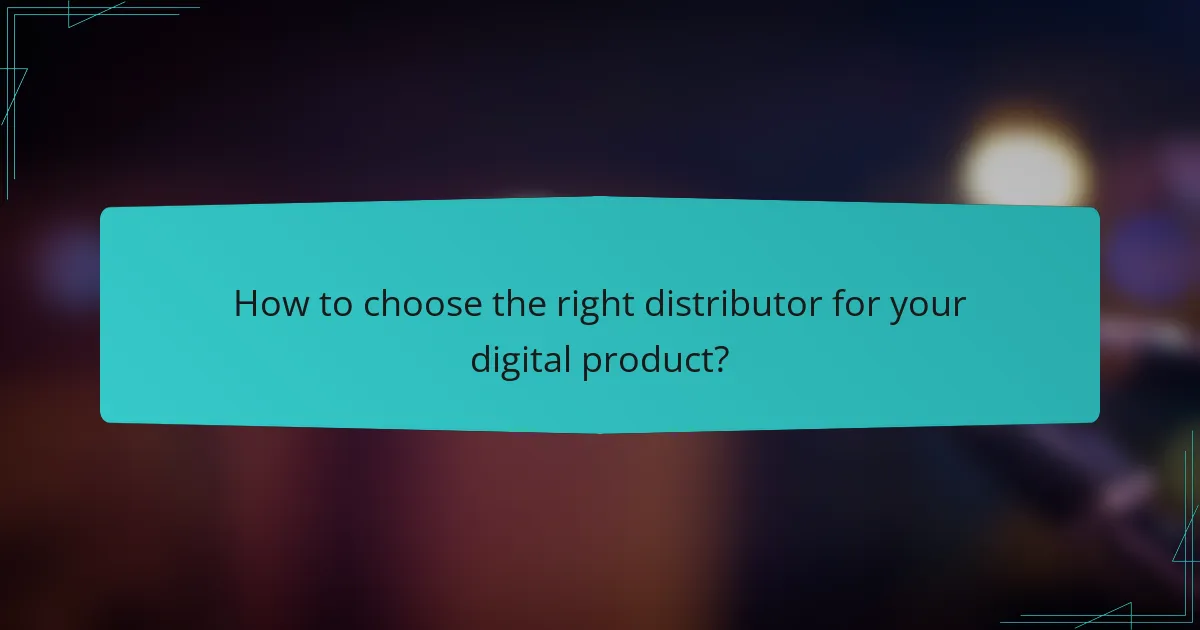
How to choose the right distributor for your digital product?
Choosing the right distributor for your digital product involves evaluating payout structures, audience reach, and marketing support. Understanding these factors can help you maximize your earnings and ensure your product reaches the right audience effectively.
Evaluate payout structures
When assessing payout structures, look for distributors that offer competitive royalty rates. Many platforms provide a percentage of sales, typically ranging from 15% to 50%, depending on the service level and distribution channels.
Consider whether the distributor charges any upfront fees or takes a cut from sales. For example, some may offer higher percentages but have hidden costs that reduce your overall earnings. Always read the fine print to understand the full financial implications.
Consider audience reach and marketing support
The distributor’s audience reach is crucial for the success of your digital product. A platform with a large user base can significantly increase your visibility and sales potential. Research the demographics and interests of the distributor’s audience to ensure alignment with your product.
Additionally, evaluate the marketing support offered by the distributor. Some may provide promotional tools, social media marketing, or featured placements that can enhance your product’s exposure. Choose a distributor that not only has a wide reach but also actively supports your marketing efforts to maximize your success.
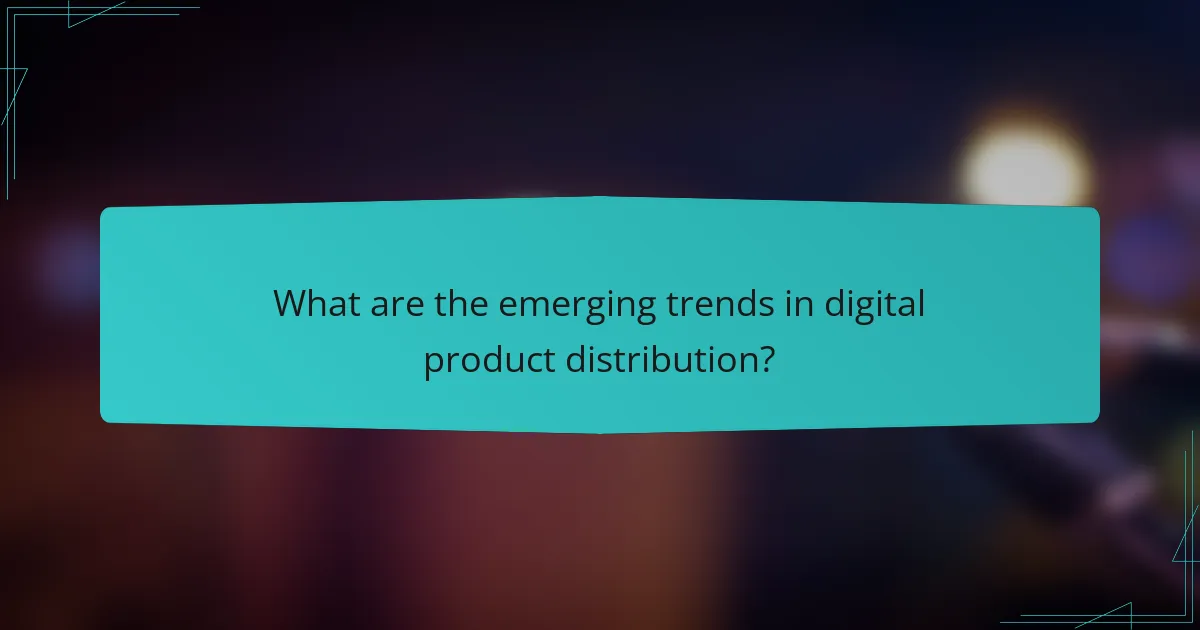
What are the emerging trends in digital product distribution?
Emerging trends in digital product distribution include a shift towards direct-to-consumer sales, the rise of subscription-based models, and the integration of blockchain technology for managing royalties. These trends reflect changing consumer preferences and advancements in technology that enhance the distribution process.
Increased focus on direct-to-consumer sales
Direct-to-consumer (DTC) sales are becoming increasingly popular as brands seek to build stronger relationships with their customers. By bypassing traditional retail channels, companies can retain a larger share of revenue and gain valuable insights into consumer behavior.
Brands can leverage online platforms to create personalized shopping experiences, which can lead to higher customer loyalty and repeat purchases. For example, a music artist might sell their albums directly through their website, allowing them to keep a greater portion of the sales revenue compared to traditional distribution methods.
Growth of subscription-based models
Subscription-based models are gaining traction across various industries, providing a steady revenue stream for businesses while offering consumers convenience and value. This model allows customers to access products or services for a recurring fee, which can lead to increased customer retention.
For instance, streaming services like Spotify and Netflix have successfully implemented subscription models, allowing users to enjoy unlimited access to content for a monthly fee. This approach not only stabilizes income for the provider but also fosters a loyal customer base.
Rise of blockchain technology in royalties
Blockchain technology is transforming how royalties are tracked and distributed, providing transparency and efficiency in the process. By utilizing smart contracts, artists and creators can receive payments automatically when their work is used, reducing delays and disputes over royalty payments.
This technology can be particularly beneficial in industries like music and publishing, where multiple parties may be involved in the distribution of a single product. For example, a musician could use blockchain to ensure that all contributors receive their fair share of royalties in real-time, enhancing trust and accountability in the distribution chain.

How can artists maximize their royalty earnings?
Artists can maximize their royalty earnings by diversifying their distribution methods, implementing strong marketing tactics, and negotiating favorable terms with their distributors. Each of these strategies plays a crucial role in enhancing overall revenue from music sales and streams.
Utilize multiple distribution channels
Using various distribution channels allows artists to reach a broader audience and increase their royalty income. Consider platforms like Spotify, Apple Music, Amazon Music, and Bandcamp, as each offers different payout structures and audience demographics.
Artists should also explore niche platforms that cater to specific genres or fan bases, which can sometimes yield higher engagement and better earnings. For example, independent artists might find success on platforms like SoundCloud or DistroKid, which can provide unique opportunities for exposure.
Engage in effective marketing strategies
Effective marketing is essential for driving traffic to your music and increasing sales. Utilize social media platforms, email newsletters, and music blogs to promote new releases and engage with fans. Consistent interaction can help build a loyal following that translates into higher royalty earnings.
Consider investing in targeted advertising on platforms like Facebook or Instagram to reach potential listeners who align with your music style. A well-planned marketing campaign can significantly boost visibility and, consequently, revenue.
Negotiate better terms with distributors
Negotiating favorable terms with distributors can significantly impact an artist’s earnings. Understand the standard commission rates and seek to negotiate lower percentages, especially if you have a proven track record or a growing fan base.
Review contracts carefully to ensure transparency regarding royalties and any additional fees. Artists should not hesitate to ask questions or seek legal advice to clarify terms that may affect their earnings. A small change in the commission structure can lead to substantial differences in overall income.


